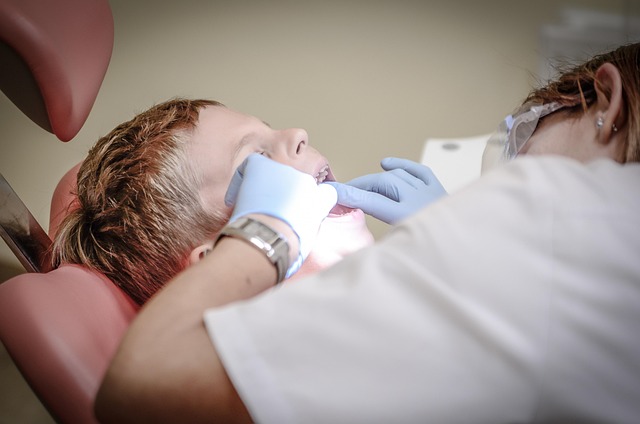Discover the Best Options for Dental Clips and Braces
Orthodontic treatment has evolved significantly, offering patients multiple options for achieving straighter teeth and improved oral health. Whether you're dealing with misaligned teeth, bite issues, or spacing problems, understanding the various types of orthodontic appliances available can help you make an informed decision about your dental care.

Modern orthodontics provides numerous pathways to achieving optimal dental alignment and oral health. Whether dealing with crooked teeth, bite issues, or jaw alignment problems, today’s dental professionals offer comprehensive solutions tailored to individual patient needs. The field has expanded beyond traditional approaches, incorporating innovative technologies and materials that enhance both effectiveness and patient comfort throughout the treatment process.
Learn More About Orthodontics and Treatment Fundamentals
Orthodontic treatment focuses on correcting irregularities in teeth and jaw positioning through carefully applied pressure and guidance systems. The fundamental principle involves gradually moving teeth into proper alignment using various appliances designed to apply consistent, controlled force. Treatment duration typically ranges from 12 to 36 months, depending on the complexity of the case and the specific approach chosen. Dental professionals assess factors including tooth positioning, jaw alignment, bite patterns, and overall oral health before recommending appropriate treatment options.
Dental splints serve a different but equally important purpose, primarily addressing issues related to teeth grinding, jaw clenching, and temporomandibular joint disorders. These custom-fitted devices protect teeth from excessive wear while promoting proper jaw positioning during sleep or periods of stress-related tension.
Types of Orthodontics: Traditional and Modern Options
Traditional metal braces remain highly effective and widely used, featuring stainless steel brackets bonded to teeth and connected by adjustable wires. These systems provide precise control over tooth movement and work effectively for complex cases involving significant alignment issues. Ceramic braces offer similar functionality with tooth-colored brackets that blend more naturally with dental enamel.
Modern alternatives include clear aligners, which use a series of custom-made, removable trays to gradually shift teeth into position. Lingual braces attach to the back surfaces of teeth, making them virtually invisible from the front. Self-ligating braces eliminate the need for elastic bands, potentially reducing treatment time and discomfort.
Dental splints come in various forms, including night guards for bruxism protection, sports guards for athletic activities, and therapeutic splints designed to address specific jaw alignment issues. Each type serves distinct purposes and requires professional fitting for optimal effectiveness.
Find the Right Orthodontic Treatment for Your Needs
Selecting appropriate orthodontic treatment involves comprehensive evaluation of individual circumstances, lifestyle factors, and treatment goals. Age considerations play a significant role, as growing children and teenagers often respond more quickly to treatment than adults. However, adult orthodontics has become increasingly common and successful.
Factors influencing treatment selection include the severity of alignment issues, aesthetic preferences, lifestyle requirements, and maintenance capabilities. Some patients prioritize discretion and choose clear aligners or lingual braces, while others prefer the reliability and cost-effectiveness of traditional metal systems.
Dental professionals conduct thorough examinations including X-rays, impressions, and digital scans to create detailed treatment plans. They consider factors such as tooth root positions, bone density, gum health, and existing dental work when recommending specific approaches.
| Treatment Type | Provider Examples | Cost Estimation |
|---|---|---|
| Traditional Metal Braces | Orthodontic practices nationwide | $3,000 - $7,000 |
| Clear Aligners | Invisalign, ClearCorrect | $3,500 - $8,000 |
| Ceramic Braces | Various orthodontic providers | $4,000 - $8,500 |
| Night Guards | Dental offices, specialized labs | $200 - $800 |
| Sports Guards | Dental practices, athletic suppliers | $150 - $500 |
Prices, rates, or cost estimates mentioned in this article are based on the latest available information but may change over time. Independent research is advised before making financial decisions.
Treatment success depends heavily on patient compliance and proper care throughout the process. Regular appointments allow dental professionals to monitor progress and make necessary adjustments. Patients must maintain excellent oral hygiene, follow dietary restrictions when applicable, and wear appliances as directed.
Maintenance requirements vary by treatment type, with some options requiring more frequent professional adjustments than others. Clear aligners demand disciplined wear schedules, while traditional braces need careful cleaning around brackets and wires. Dental splints require regular cleaning and periodic replacement to maintain effectiveness.
The orthodontic field continues advancing with new materials, techniques, and technologies that improve treatment outcomes while enhancing patient comfort. Digital treatment planning, 3D printing, and accelerated orthodontics represent emerging trends that may further transform the field. Understanding available options empowers patients to work effectively with dental professionals in achieving optimal oral health and aesthetic results through appropriate orthodontic intervention.
This article is for informational purposes only and should not be considered medical advice. Please consult a qualified healthcare professional for personalized guidance and treatment.




